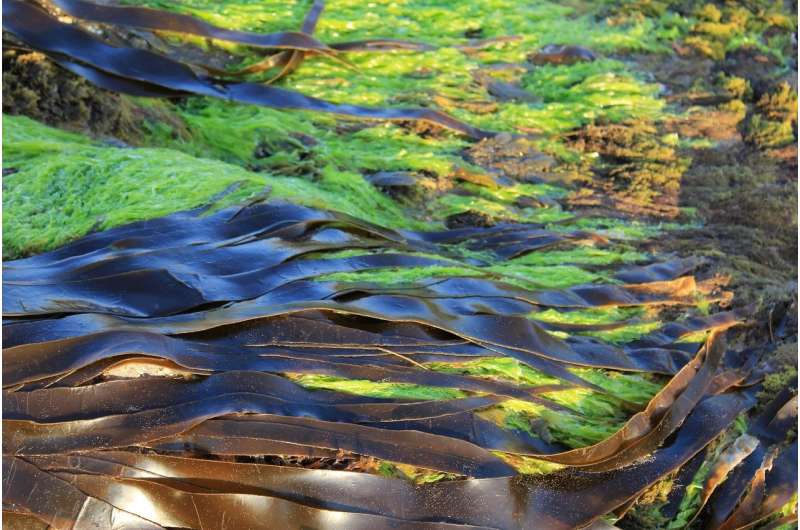Left out to dry: A more efficient way to harvest algae biomass

A team at the University of Tsukuba introduced a new procedure of harvesting energy and organic molecules from algae using nanoporous graphene and porous graphene foams. By developing a reusable system that can evaporate water at high rate without the need for centrifugation or squeezing. This research has a great potential for the application of producing cleaner, cheaper, and more efficient biofuels, vitamins, and chemicals.
In the fight against global climate change, algae biomass is a very exciting field of research, because they are photosynthetic microorganisms that convert light energy from the sun into energy-rich biomolecules. When algae are grown and harvested on an industrial scale, these molecules can be converted into a wide array of important compounds, including biofuel, medicines, omega-3 dietary supplements, and many other valuable bio-products. Algae are also able to absorb carbon dioxide as they grow, switching from traditional fossil fuels to biofuels holds the promise of slashing net greenhouse gas emissions. However, micro-algae cultures consist primarily of water at low solid content (0.05—1.0 wt%) and harvesting the organic material due to solid-liquid separation techniques usually requires multiple dehydration steps.
Now, scientists at the University of Tsukuba introduced a new method for removing water from algae biomass that does not damage the fragile compounds to be harvested. In contrast with previous methods which rely on mechanical centrifugation or squeezing, while this approach uses solar irradiation and reusable, nanostructured support materials. The fabrication of hierarchically-structured nanoporous graphene and porous graphene foams creates tiny channels for water to be pulled upwards from deep inside the sample.
This novel developed material protects the biomass from overheating while capturing more of the sun's energy to evaporate the water. "We needed a material that absorbs light, has a low specific heat and thermal conductivity, but is still hydrophilic and porous, with a large surface area," says first author Professor Yoshikazu Ito. "Fortunately, nitrogen-doped nanostructured graphene possesses all of these qualities."
"The more energy efficient we can make the dehydration process, the more we can preserve the environmental benefits of using biomass in the first place," says senior author Dr. Andreas Isdepsky.
More information: Yoshikazu Ito et al. Damage-Free Solar Dewatering of Micro-Algal Concentrates via Multifunctional Hierarchical Porous Graphene, Advanced Sustainable Systems (2019). DOI: 10.1002/adsu.201900045
Provided by University of Tsukuba





















